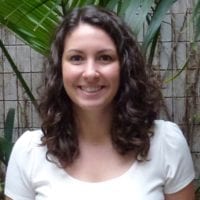
Molecular and cytological characterization of dsyCS
Meiotic recombination is the basis of evolutionary change over time. While recombination has been extensively studied, still little is known of the mechanisms behind this process. Many studies have suggested that recombination is in part needed for pairing of homologous chromosomes. The mutantdsyCS, which is defective in homologous chromosome pairing during meiosis, was used to further study the mechanisms of how the recombination pathway is coordinated with pairing. Previous work done in the Pawlowski lab shows that there are a substantially reduced number of RAD51 foci in thedsyCS mutant leading to a complete elimination of homologous chromosome pairing. However, it is still unknown at what stage the mutation is occurring. Immunolocalization coupled with three dimensional deconvolution microscopy was used to observe the number of foci of γ-H2AX and MLH3 proteins in wild type and mutant maize. A reduced number of γ-H2AX foci as well as a reduced number of MLH3 were detected at all the prophase stages that were observed, drawing the conclusion that indsyCS mutants the formation of double strand breaks were impaired. The more knowledge about the mechanisms behind meiosis can have many applications, including plant breeding, cancer genetics, and birth defects.
My Experience
As a PGRP intern with BTI, I was able to answer a lot of the questions I had about research, graduate school, and research careers. I knew that I wanted to do research, but wasn’t sure which area I wanted to do research in. Pawlowski’s lab is focused on meiosis, which is very complex but applicable to all organisms that undergo meiosis.
I had done research in a laboratory setting before and I felt like the new techniques I learned here perfectly complemented my previous research experience. I plan on going to graduate school in the plant sciences, but didn’t know what being a graduate student really entailed. This experience has been invaluable in helping me see what being a graduate student in this field would be like. I felt like an integral part of the lab here and I am very grateful that I had the opportunity to be a part of the Pawlowski lab and the BTI program.
